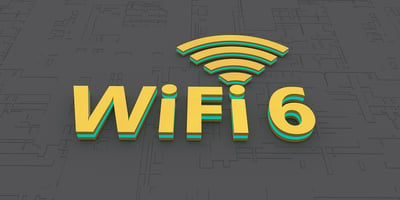In secondary surveillance radar (SSR) systems, a ground-based radar antenna transmits an...
How Do Diode Detector-based Test Instruments Measure RF Power?
RF power measurements have a hand in validating wireless designs, enhancing system efficiency and performance, satisfying regulatory and safety standards, and meeting the T&M needs of many unique use-cases.
With the digital modulation methods and pulsed modes used in modern communications, the demand for accurate, reliable, and efficient RF power measurements continues to grow for next-generation systems.
In the post below, uncover the basics behind diode detector-based RF power test equipment, supported by high-performance product examples from Boonton.
Diode Detector-based RF Test Instruments
Engineers can measure RF power using a variety of technologies, such as thermal RF power sensors, receiver-based amplitude measurements, RF sampling, and diode detector-based sensors. Each type of sensor has a certain effect on frequency range, the acceptable span of input power levels, result accuracy, and the speed at which it operates.
Today we're going to focus on diode detector-based test equipment.
Diodes are semiconductor devices or components, meaning they can conduct or oppose the flow of current. A diode-based power sensor uses high-frequency diodes to rectify the RF signal to a DC voltage signal. Proportional to the amplitude of the RF signal, this voltage is captured near the signal source. Instruments like an RF power meter can measure and scale the DC voltage to reveal desired power measurements. The relation between the DC voltage and power result depends on whether the diode operates in the square-law, transition, or linear region.
💡Want more information on how RF power is detected as well as other power measurement fundamentals? Download the free poster from Boonton below, which is a great reference guide for the core principles of RF and microwave power measurement.
Sensors can fall under different categories, such as peak or average.
Peak power sensors have a small smoothing capacitance and use a low-impedance load across the smoothing capacitors to discharge rapidly when the RF amplitude drops. This means that peak power sensors can deliver quick rise times and wide video bandwidths. Boonton RTP5000 Series sensors, for example, are performance leaders in RF and microwave peak power measurements, offering less than 3 nanosecond rise times and 195 MHz of video bandwidth. Additional features include automatic pulse power measurements, CCDF and crest factor statistical analysis, and multi-channel capabilities.
The Boonton RTP4000 Series, on the other hand, provides true average RF power measurements with virtually no modulation bandwidth limitations over a frequency range down to 4 kHz. Average power sensors operate in the square-law region where the DC voltage output is closely proportional to the square of the applied RF voltage. These sensors, therefore, deliver accurate and reliable average power measurements despite the presence of modulation.
Both the RTP5000 and RTP4000 Series push measurement speed to the extreme. The RTP family of Boonton RF power sensors utilize a unique parallel processing methodology known as Real-time Power Processing (RTPP), which drives the fastest measurement rate of 100,000 measurements per second with zero dead time.
These two sensor series can connect directly via USB. Users can easily attach them to a PC with analysis software such as the Boonton Power Analyzer to view and interpret results.
For those wanting a dedicated benchtop experience, USB sensors may also connect to a benchtop power meter instead of a PC. The Boonton PMX40 RF Power Meter offers just that – the utility of a benchtop, performance and flexibly of USB RF power sensors, and a touch screen display.
Traditionally, analog sensors were used with benchtop systems, supplying an analog signal. This input, however, requires calibration due to temperature-induced variations. USB power sensors have an edge over this approach since they handle detection, digitization, and temperature compensation, which eliminates the need for calibration.
Learn More
What should be considered when choosing a technology for RF power measurements? How can a power sensor and meter assess the linearity of an amplifier? What is the right test equipment for pulsed power measurements? Find the answers to these questions and more in the article, "Key considerations for RF power measurement equipment," featured in EE World's Test and Measurement Handbook.
Don't let your T&M questions go unanswered. Flip to page 36 today!
Whether you're looking for high-performance RF and microwave test equipment or want a firmer grasp on power measurement fundamentals, www.boonton.com is the place to be.





